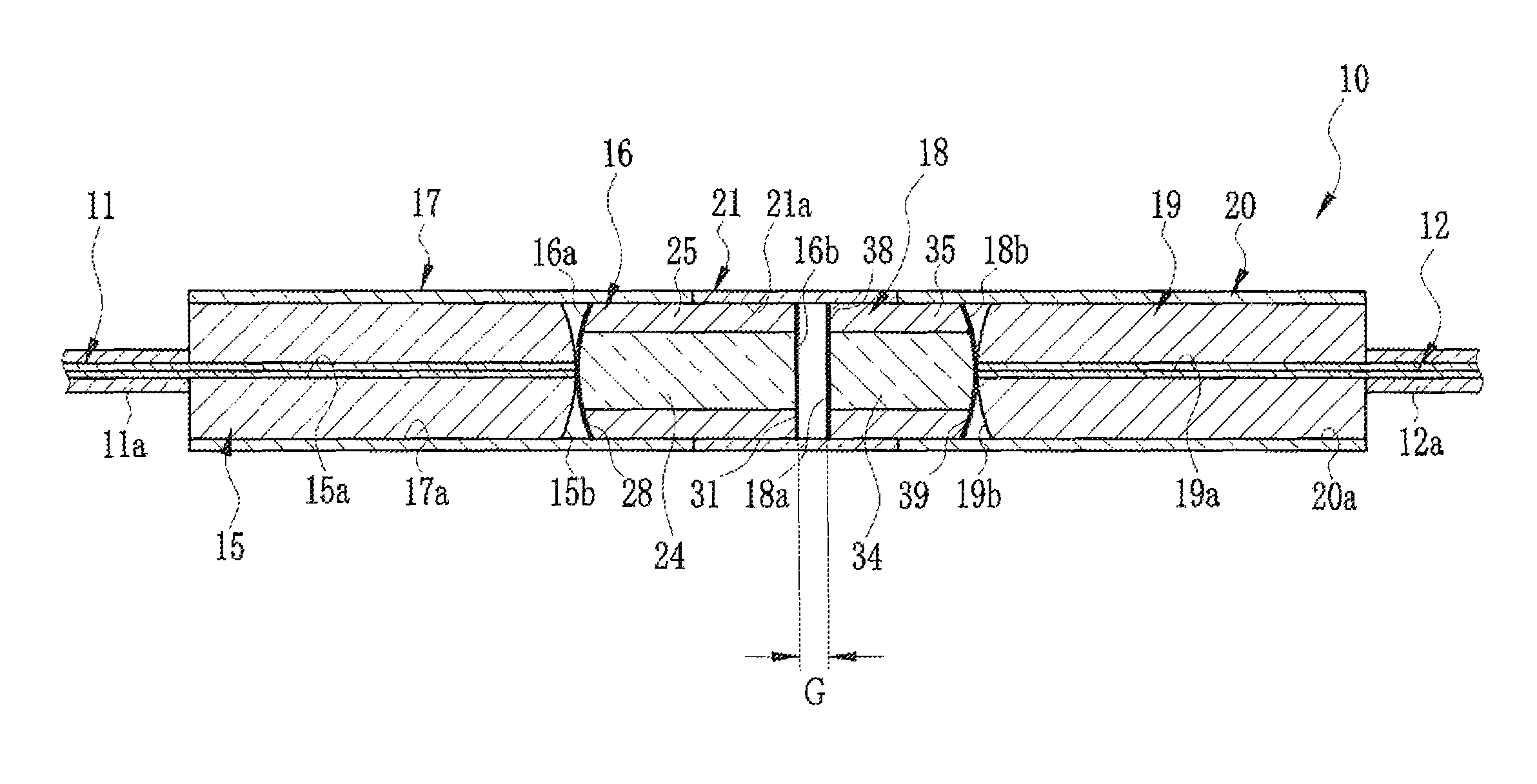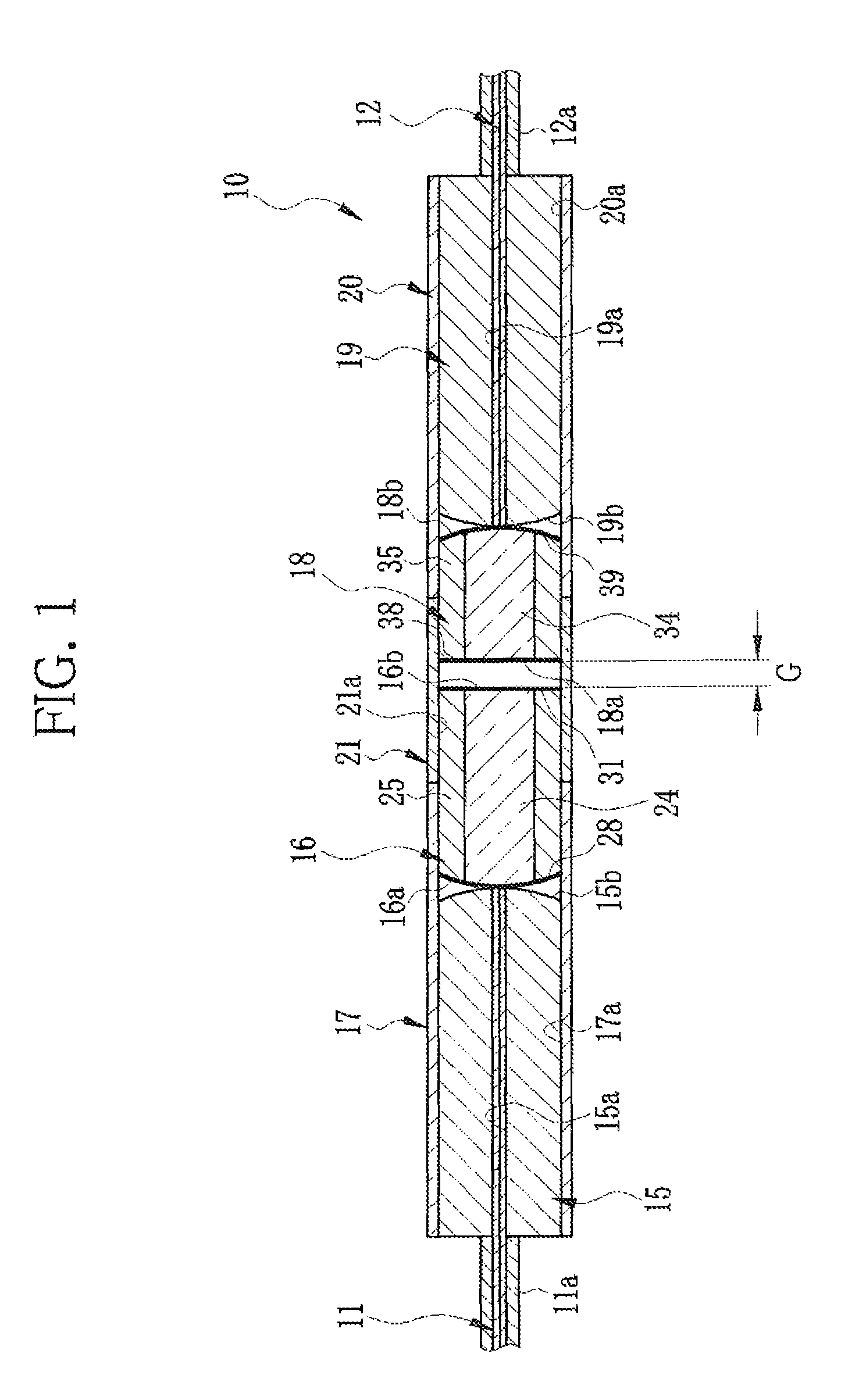Optical fiber connector and endoscope system using the same
a technology of optical fiber connector and endoscope, which is applied in the direction of instruments, telescopes, bundled fibre light guides, etc., can solve the problems of increasing the loss of light transmitted through the optical fiber, the tip of the connector is tending to be dusty, and the damage to the end face of the light guide provided, so as to increase the yield rate and cost, and reduce the loss of connection between the first and second graded index fibers
- Summary
- Abstract
- Description
- Claims
- Application Information
AI Technical Summary
Benefits of technology
Problems solved by technology
Method used
Image
Examples
Embodiment Construction
[0035]FIG. 1 shows an optical fiber connector 10 that connects a first optical fiber 11 to a second optical fiber 12. The first and second optical fibers 11 and 12 are multimode fibers that are made of quartz and have a core diameter of 100 μm or more, for example. Laser light having a short wavelength of 405 to 635 nm and a high power of 100 mW or more is transmitted from the first optical fiber 11 to the second optical fiber 12. According to a transmission direction of the laser light, a right side of FIG. 1 is referred to as a front side (distal), and a left side is referred to as a rear side (proximal).
[0036]The optical fiber connector 10 is constituted of a first ferrule 15 for holding a front end portion of the first optical fiber 11, a first fiber stub 16 detachably connected to the first ferrule 15, a first sleeve 17 for holding the first ferrule 15 and the first fiber stub 16, a second ferrule 19 for holding a rear end portion of the second optical fiber 12, a second fiber ...
PUM
 Login to View More
Login to View More Abstract
Description
Claims
Application Information
 Login to View More
Login to View More - R&D
- Intellectual Property
- Life Sciences
- Materials
- Tech Scout
- Unparalleled Data Quality
- Higher Quality Content
- 60% Fewer Hallucinations
Browse by: Latest US Patents, China's latest patents, Technical Efficacy Thesaurus, Application Domain, Technology Topic, Popular Technical Reports.
© 2025 PatSnap. All rights reserved.Legal|Privacy policy|Modern Slavery Act Transparency Statement|Sitemap|About US| Contact US: help@patsnap.com



